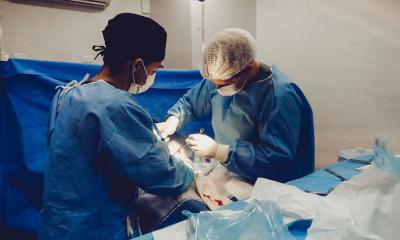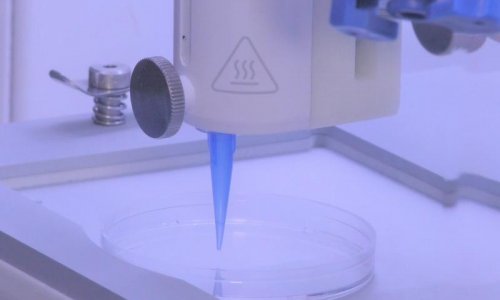Pressure ulcers
Heidi Heinhold, of the German League for Decubitus Ulcers, sums up physiological basics and practical care issues
Physiology is the science concerned with the processes and functions of an organism.
Profound knowledge of physiology allows us to recognise states that deviate from the norm and decide whether these anomalies should be classified as diseases or disorders and thus require care. The initial instrument to assess a patient is the care history. The second mandatory step is the definition of realistic care objectives, the planning and implementation of care measures and the assessment of the results in terms of quality control and nursing science.
Care history is risk assessment
The assessment of a pressure ulcer risks encompasses (beyond a patient’s age and sex) the following:
l biological age and state of hydration of local cells, particularly in skin and subcutaneous tissue
l state of deep tissue
l state and functioning of blood vessels
l state and functioning of the lymphatic system.
A patient can rarely provide information on these aspects because, while he probably remembers recent injuries or thromboses, embolisms or known vascular or lymphatic diseases, he is probably not aware of the effects of such injuries or conditions on tissue. The skin turgor (elasticity) provides a first indication of hydration. Pressure on the tissue allows a general assessment of the micro-circulation: if the tissue blanches and the vessels do not refill after a few heartbeats, a circulation disorder is present which can be further differentiated:
l bluish-grey colour indicates a venous disorder of the micro-circulation
l if the site where the pressure was applied remains white for some time and is even cooler than the adjacent tissue an arterial disorder of the micro-circulation has to be suspected.
In the first case the flow of blood and interstitial fluid is disturbed; in the second, the tissue is inadequately supplied with blood. Moreover, there is an as yet unverifiable lymphatic drainage problem. Mechanical obstacles, such as occluded venules or insufficient or overburdened lymph precollectors, cause fluid build-up between cells. This fluid contains, for example, proteins, fats, anaerobe bacteria, cell toxins and other substances that need to be removed through the lymphatic system as quickly as possible, but which cannot be removed since an interstitial oedema blocks the way.
Interstitial oedema are tissue alterations that the most recent NPUAP classifications describe as induration, oedema, painful, soft, exuding, warmer but also cooler than the adjacent tissue. These symptoms indicate a deep tissue disorder that, if untreated, can develop into pressure ulcers. Ideally, a differential diagnosis with the help of imaging methods provides answers to such phenomena. From a physiological point of view, these tissue alterations require the patient to be moved, to activate the venous flow and enable the lymphatic pre-collectors to remove the interstitial liquid. Frequent repositioning is necessary for the local liquid accumulations to dissolve spontaneously, which is still possible in this early stage.
Rubefacient ointments, heating or cooling and massages must be avoided, because such measures increase the arterial inflow to the regions at risk. Consequently even more liquid is released into the interstitial spaces, which means the oedema grows and aggravates the situation. Thus the risk of infectious decubitus stage I as a disease stage would be heightened rather than reduced.
Nurses should be trained to recognise palpable superficial tissue changes and in turn train family carers, since this effectively and significantly increases early detection and prevention of pressure ulcers.
Pressure ulcer stages revision
USA – Following five years of work, which began with the identification of deep tissue injury in 2001, the National Pressure Ulcer Advisory Panel (NPUAP), in Washington DC, has redefined the definition of a pressure ulcer and the stages of pressure ulcers, including the original four stages, and adding two stages on deep tissue injury and unstageable pressure ulcers.
The staging system was defined by Shea in 1975 and provides a name to the amount of anatomical tissue loss. The original definitions were confusing to many clinicians and lead to inaccurate staging of ulcers associated or due to perineal dermatitis and those due to deep tissue injury.
The proposed definitions were refined by the NPUAP with input from an online evaluation of their face validity, accuracy clarity, succinctness, utility, and discrimination. This process was completed online and provided input to the Panel for continued work. The proposed final definitions were reviewed by a consensus conference and their comments were used to create the final definitions.
* Source/details: npuap@npuap.org
01.07.2008






